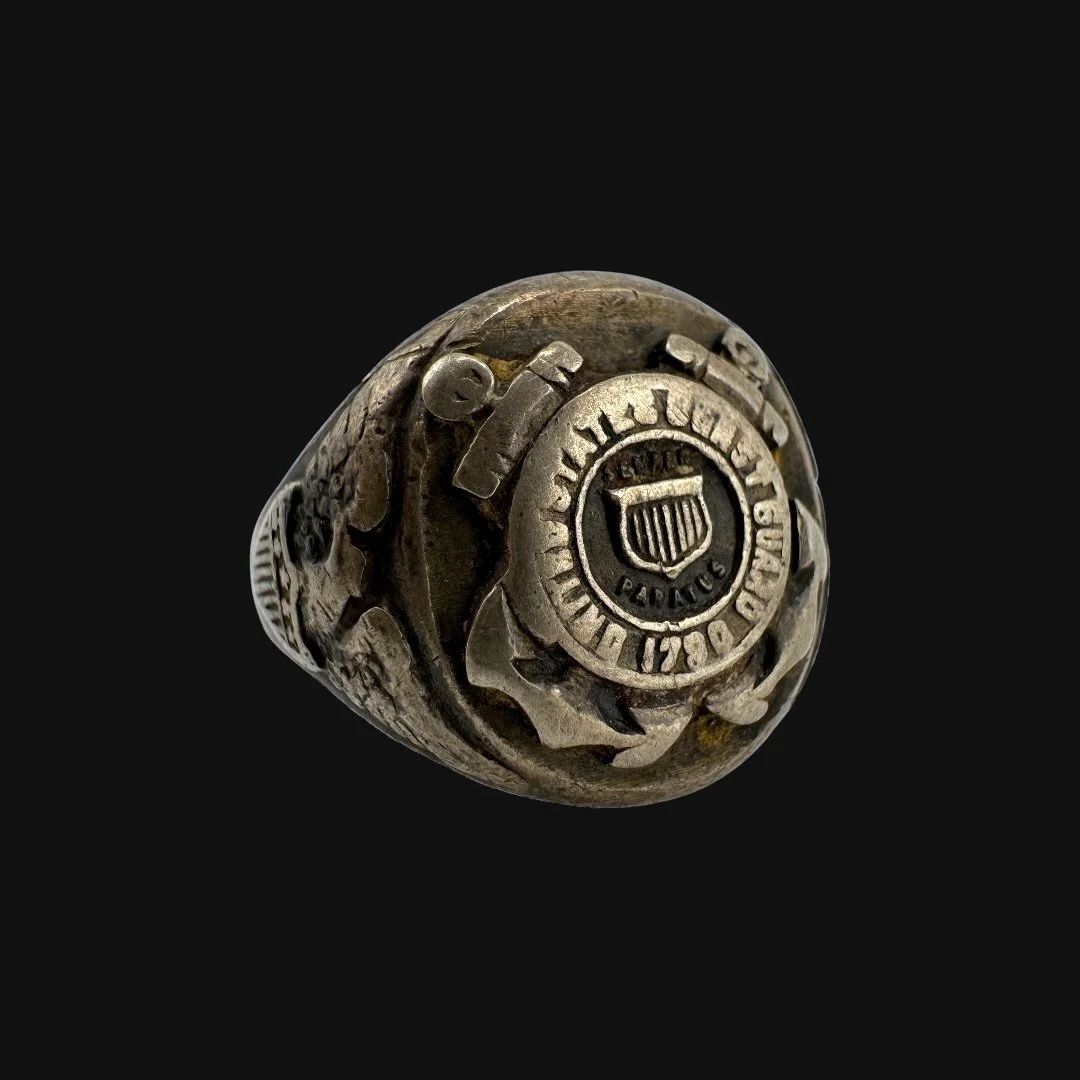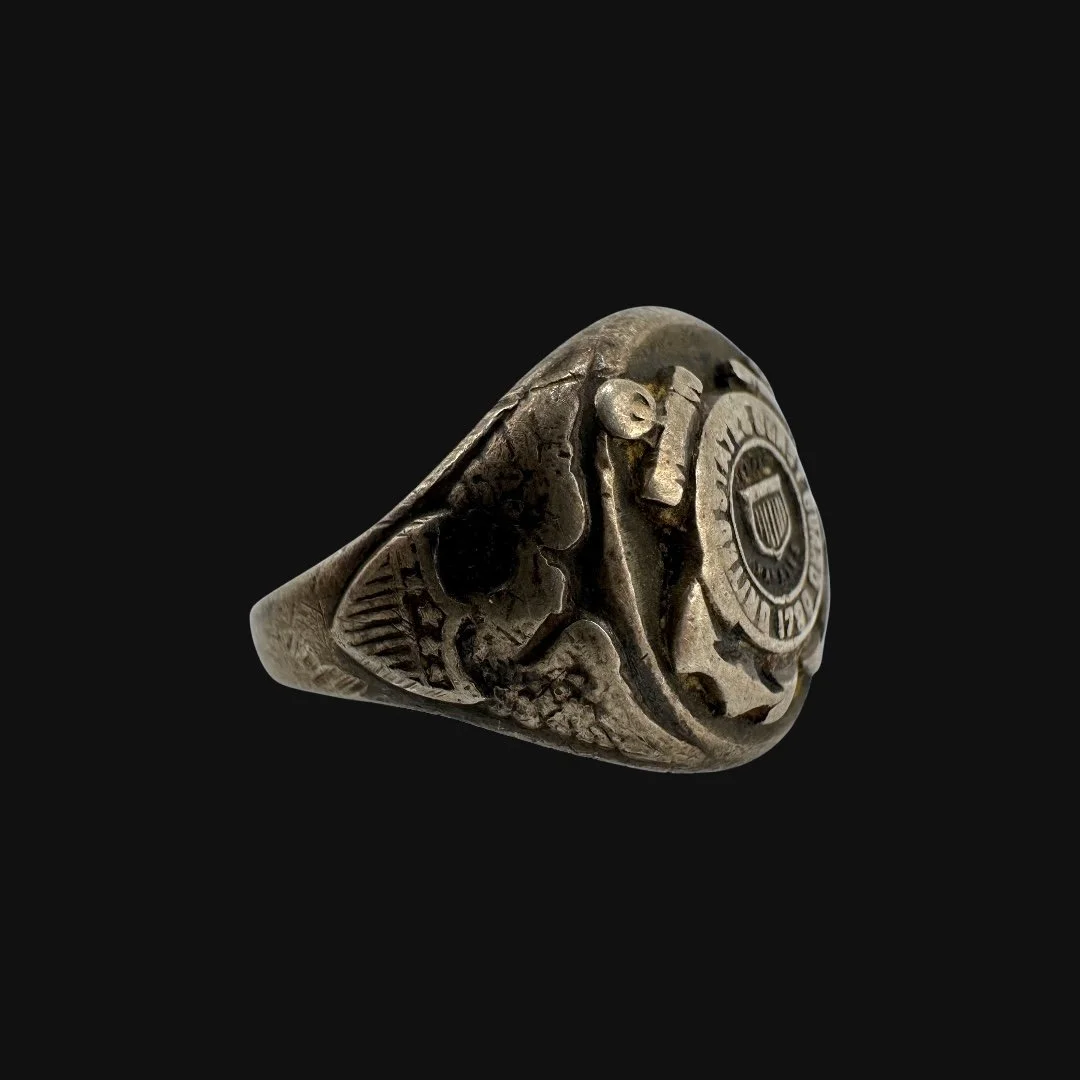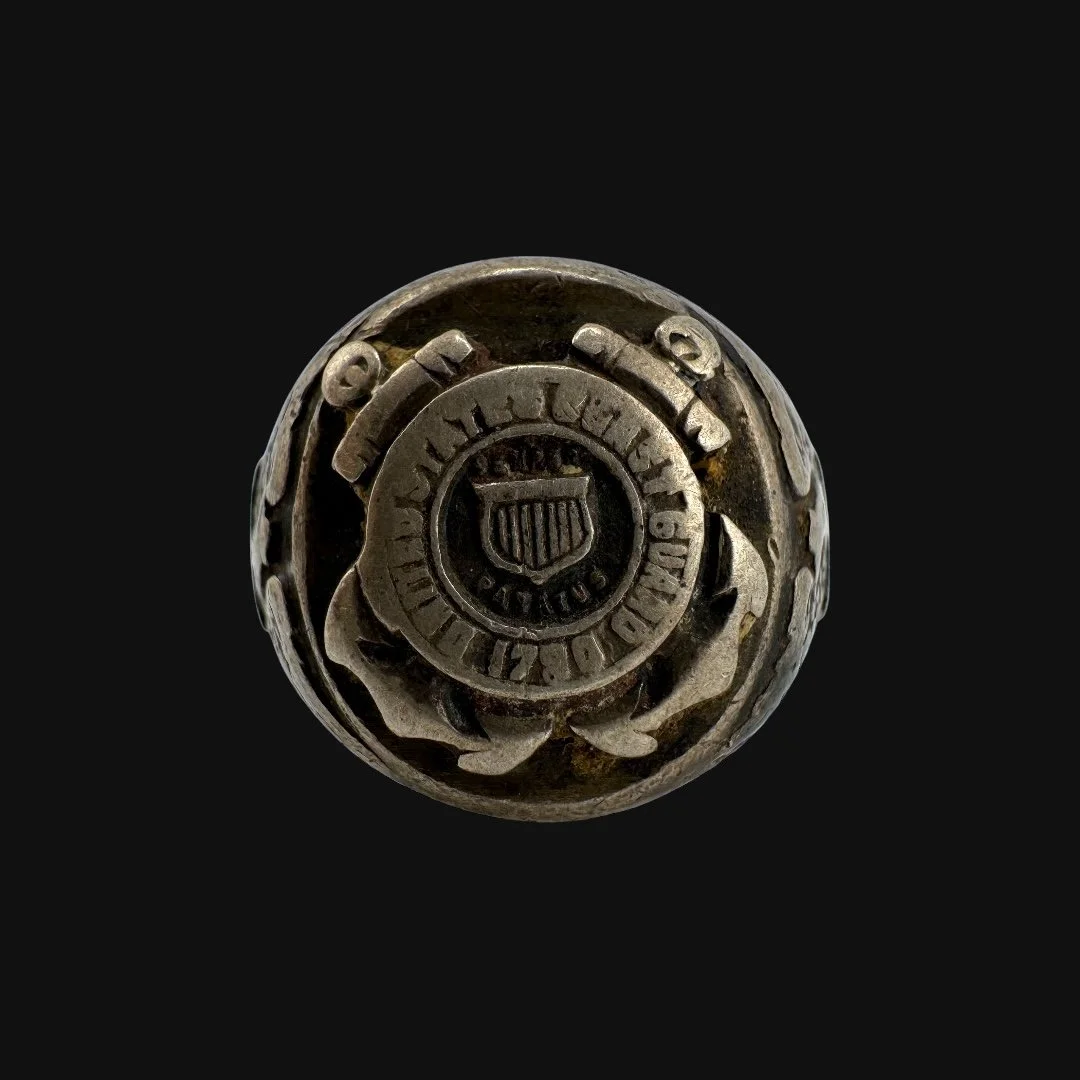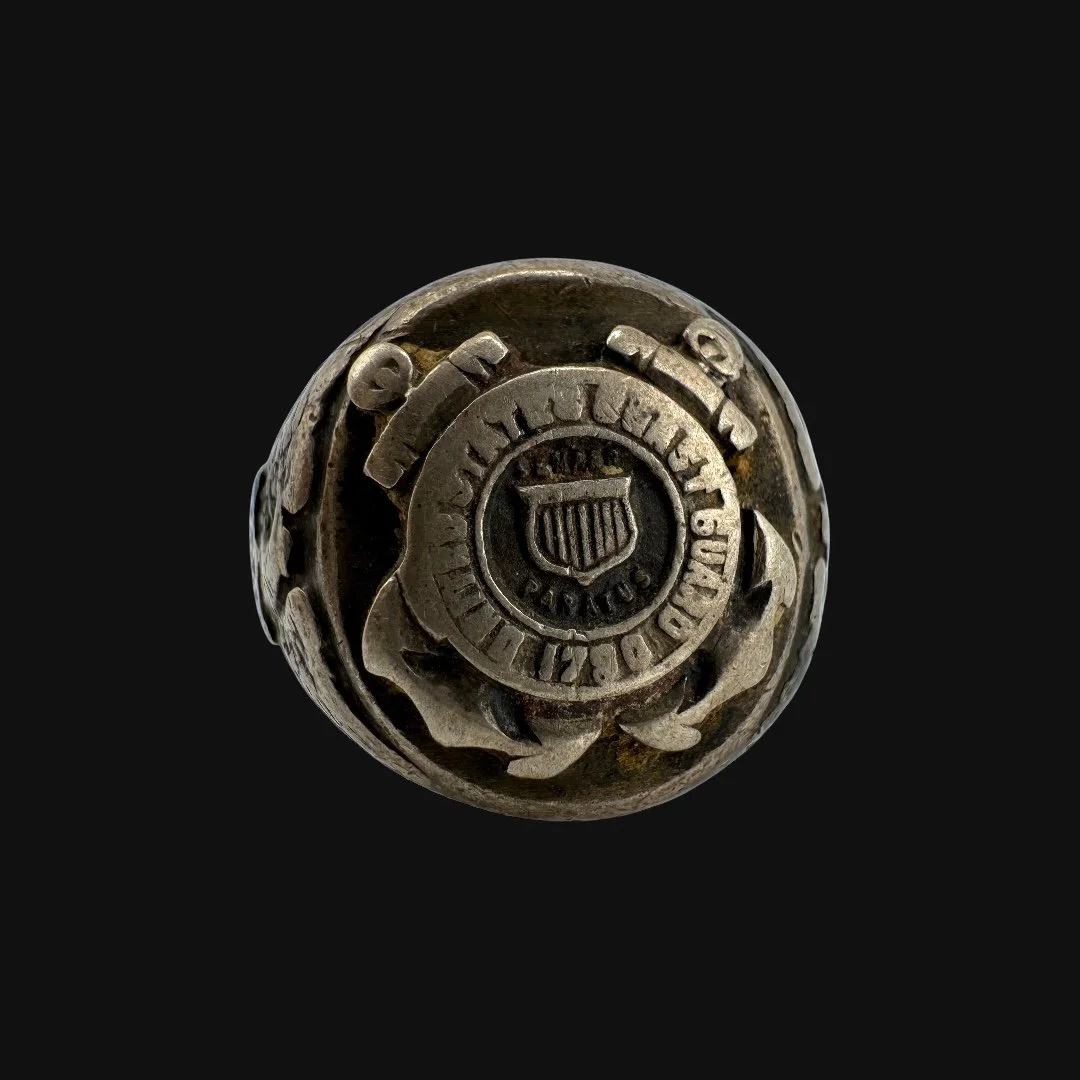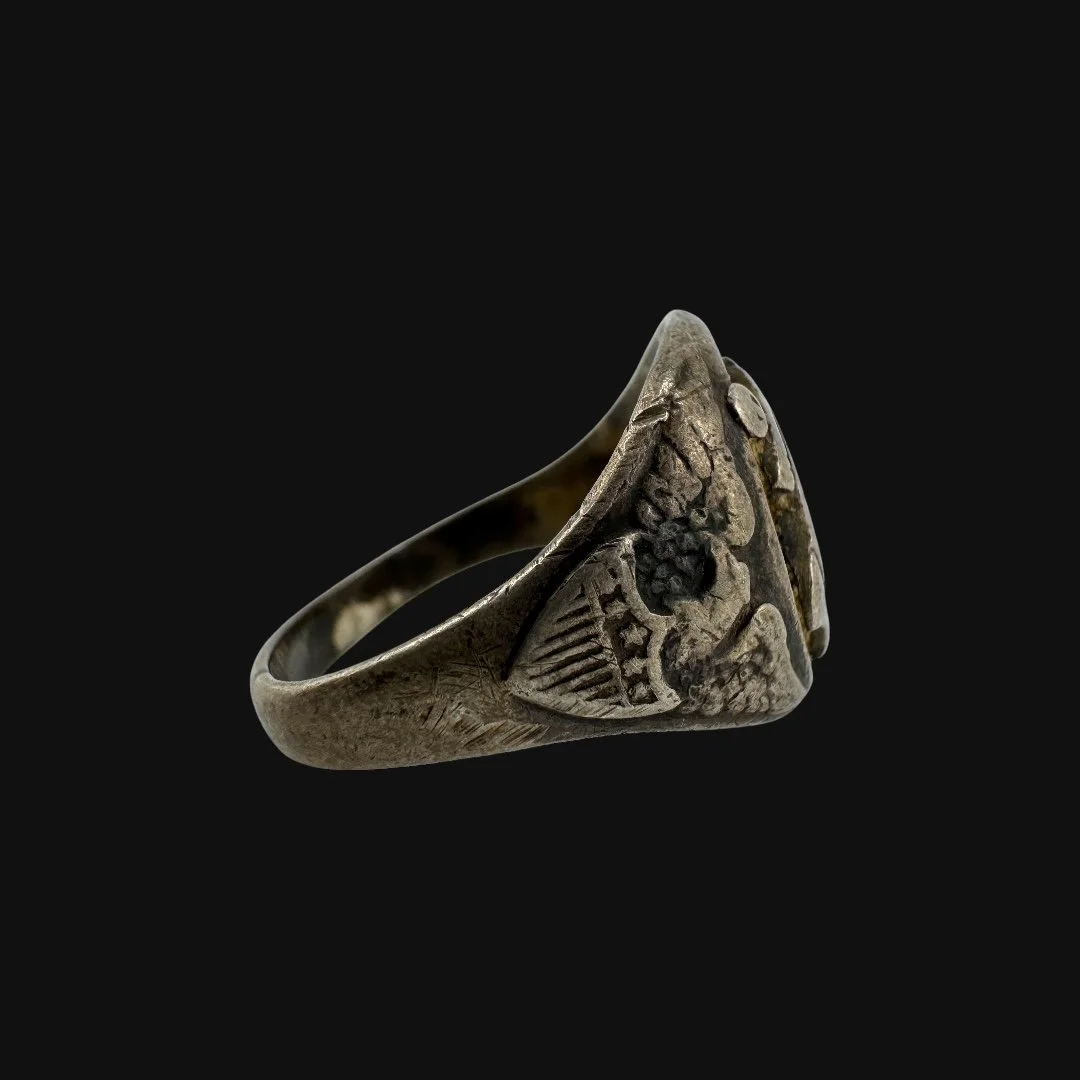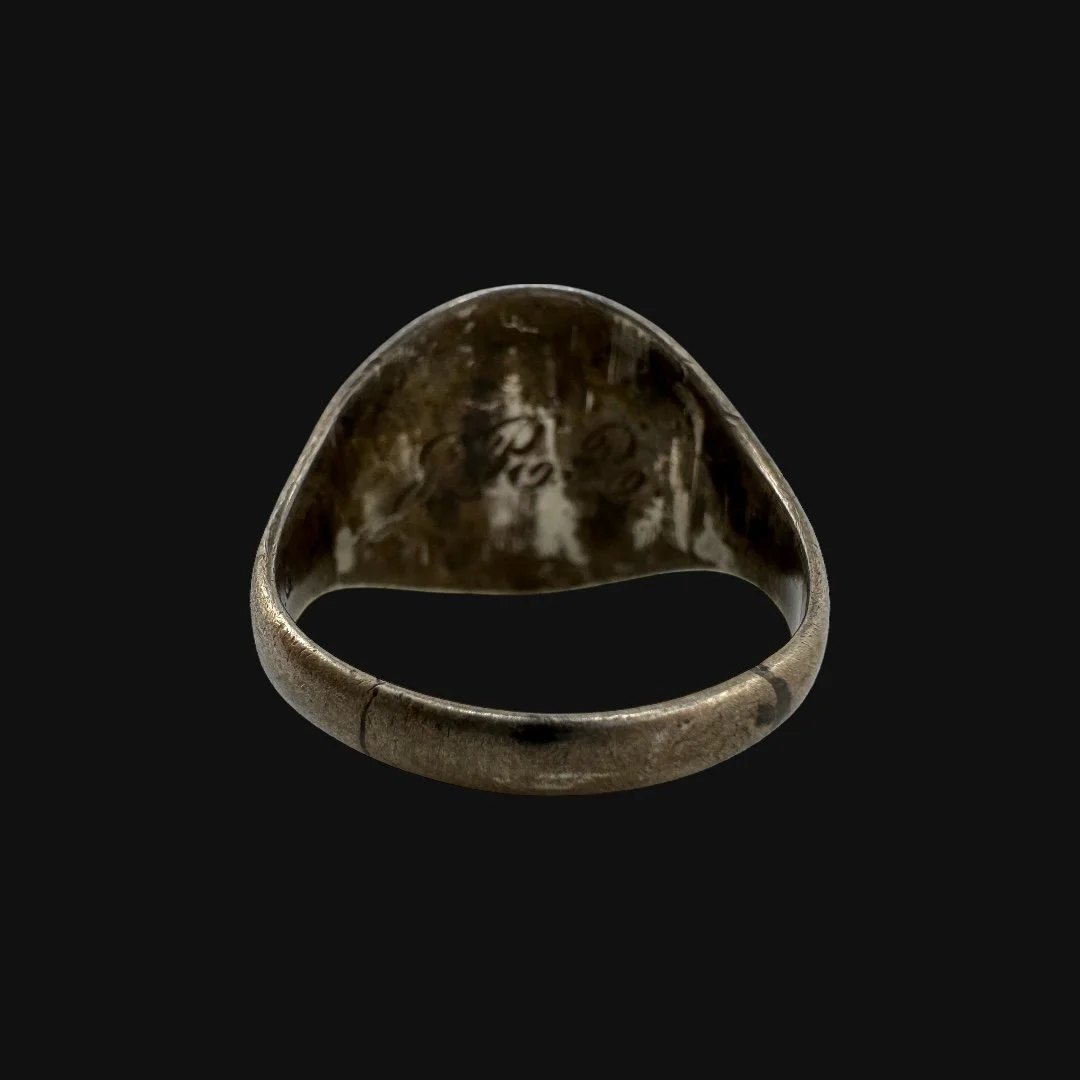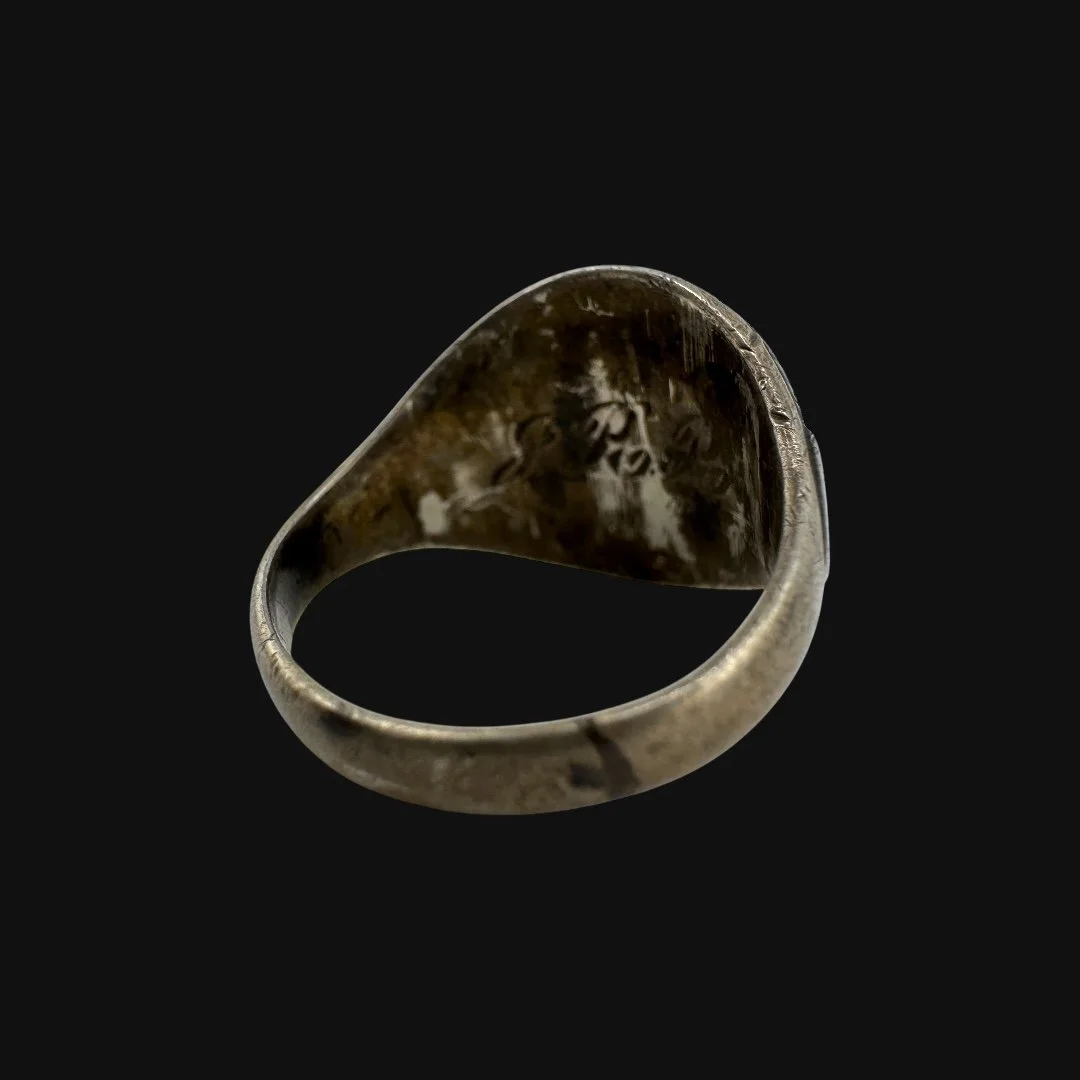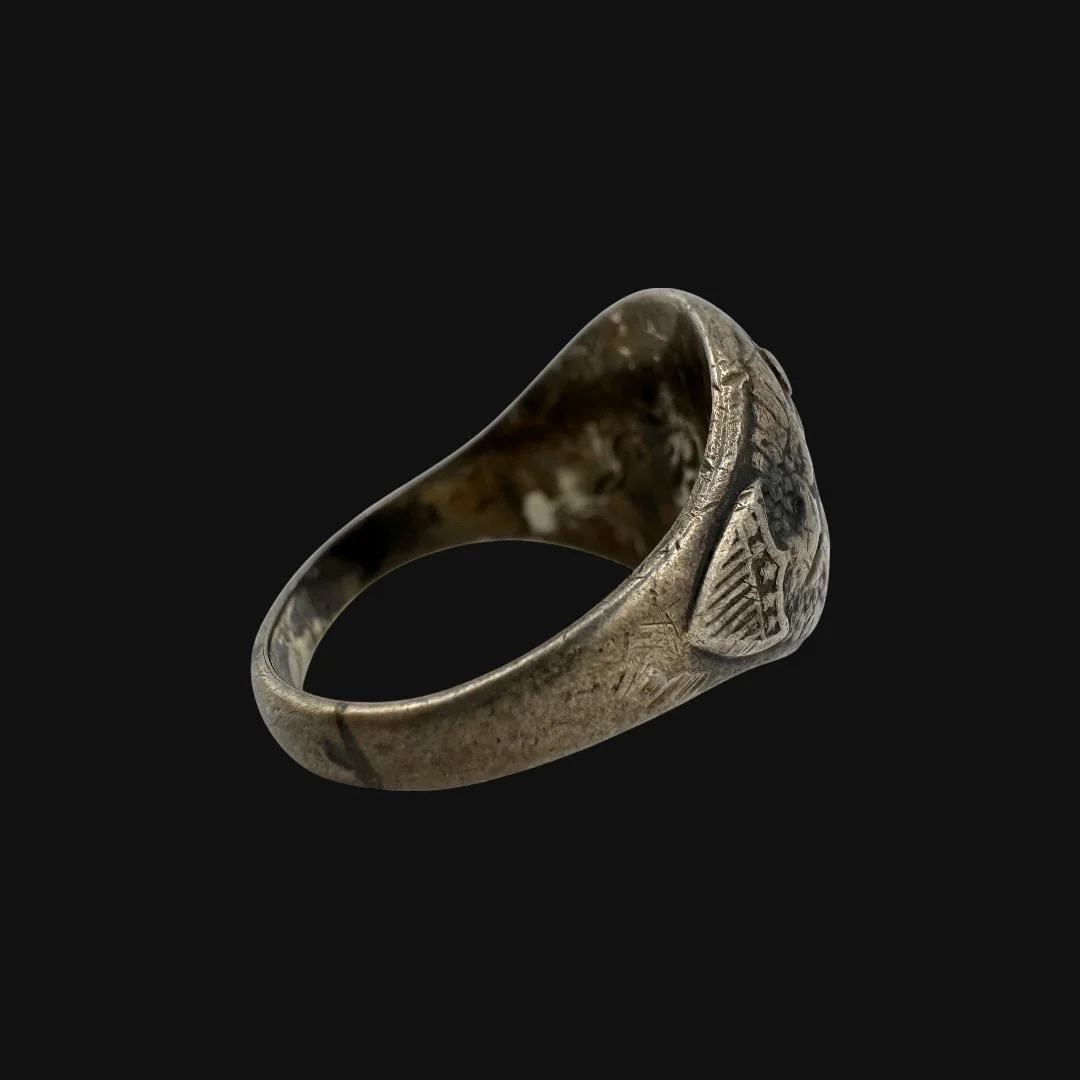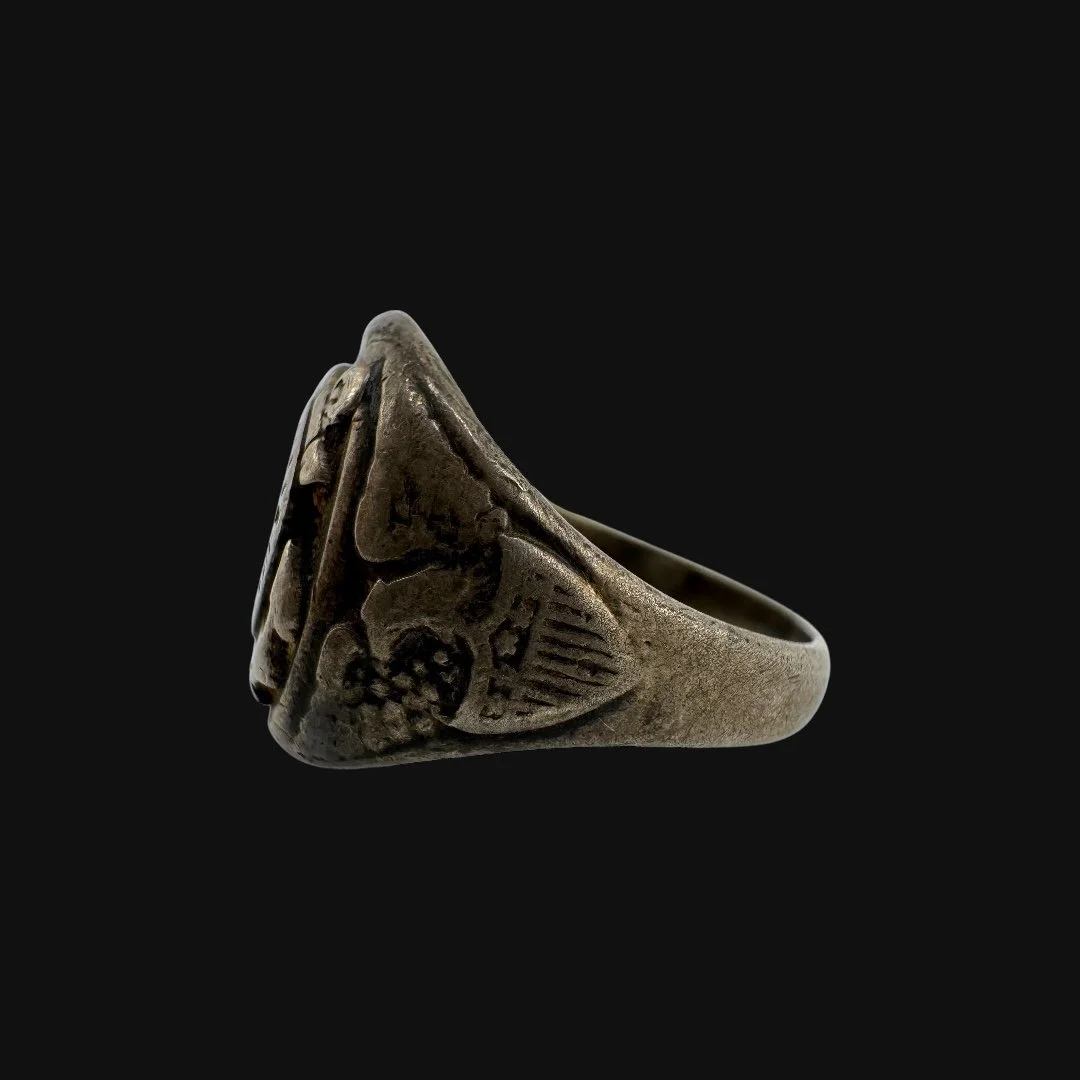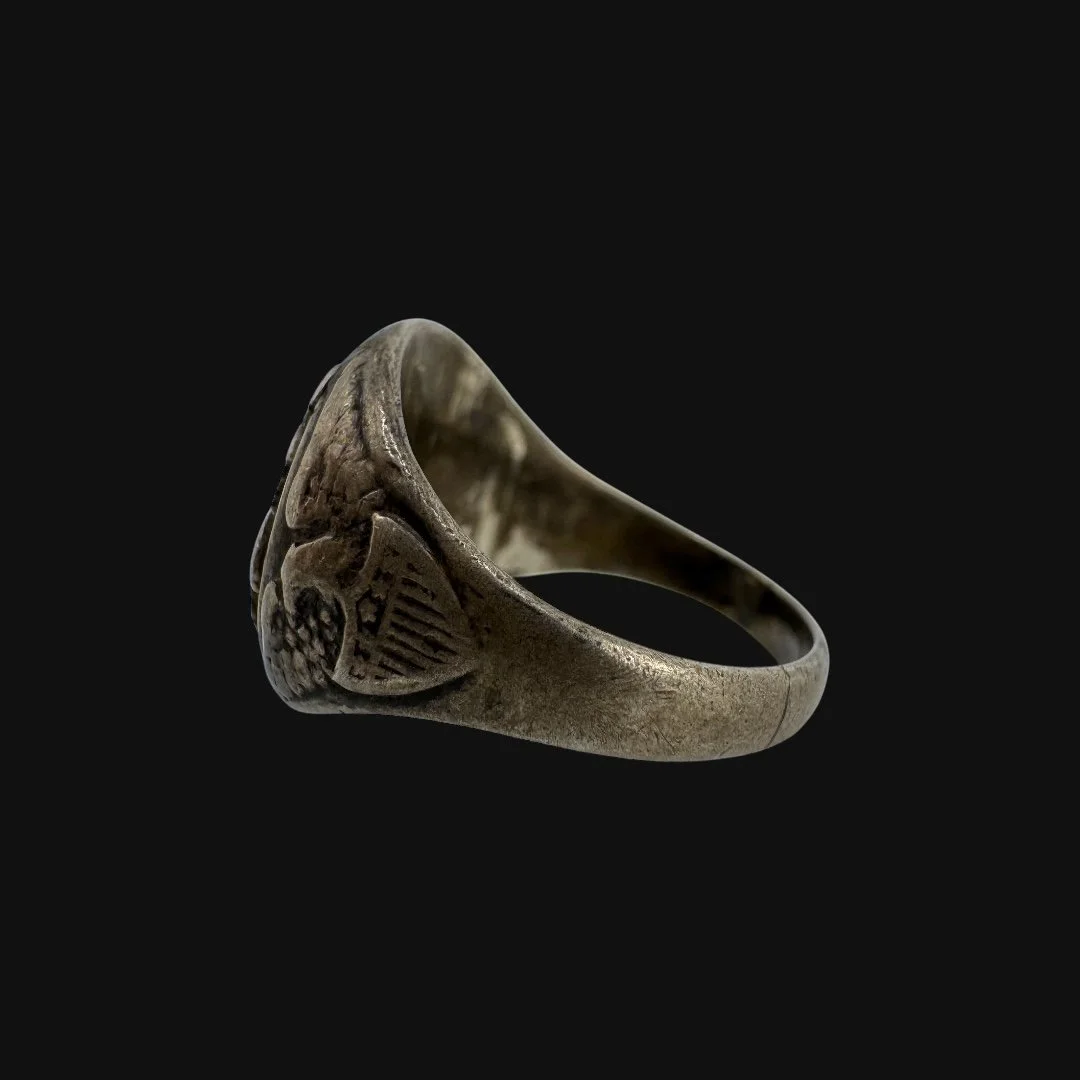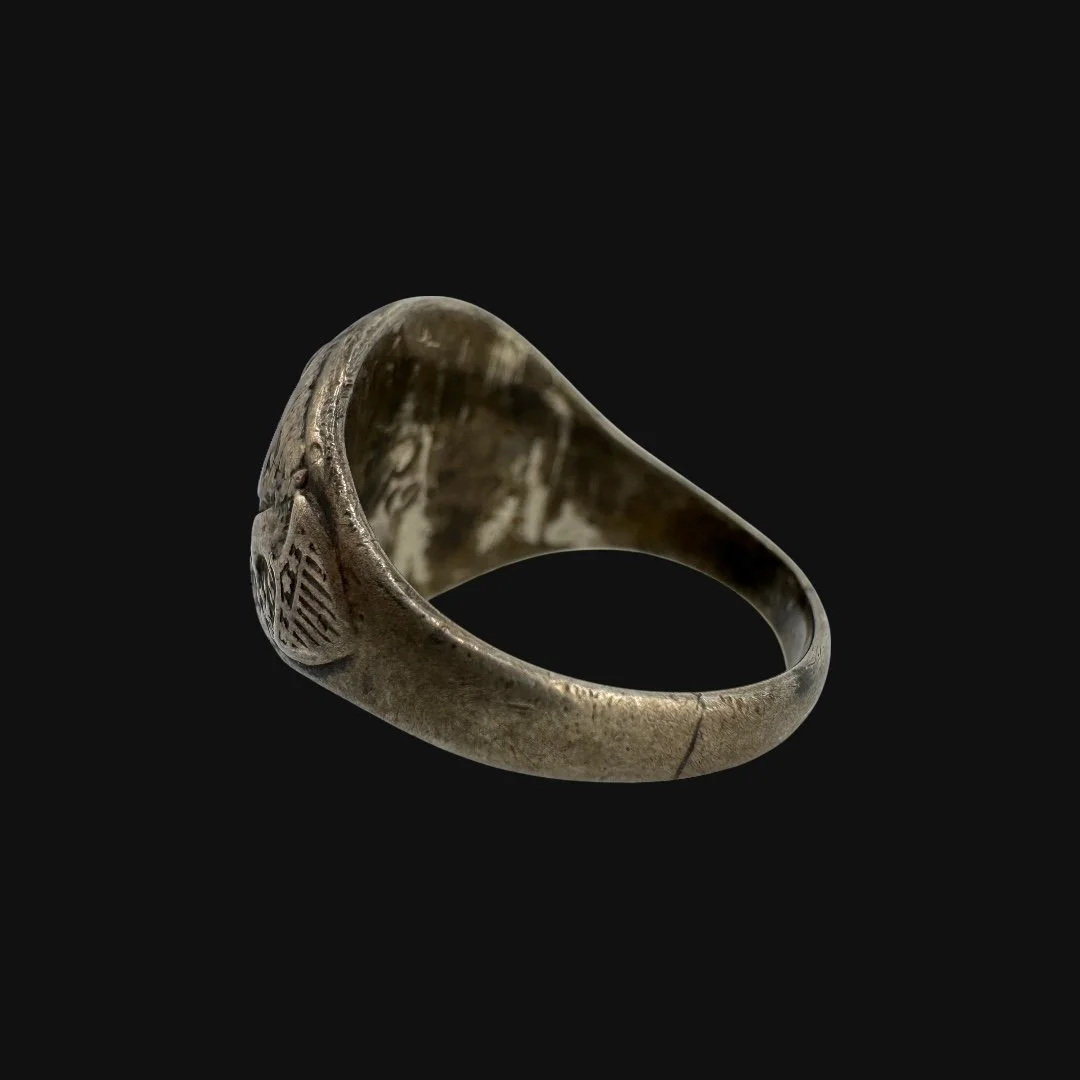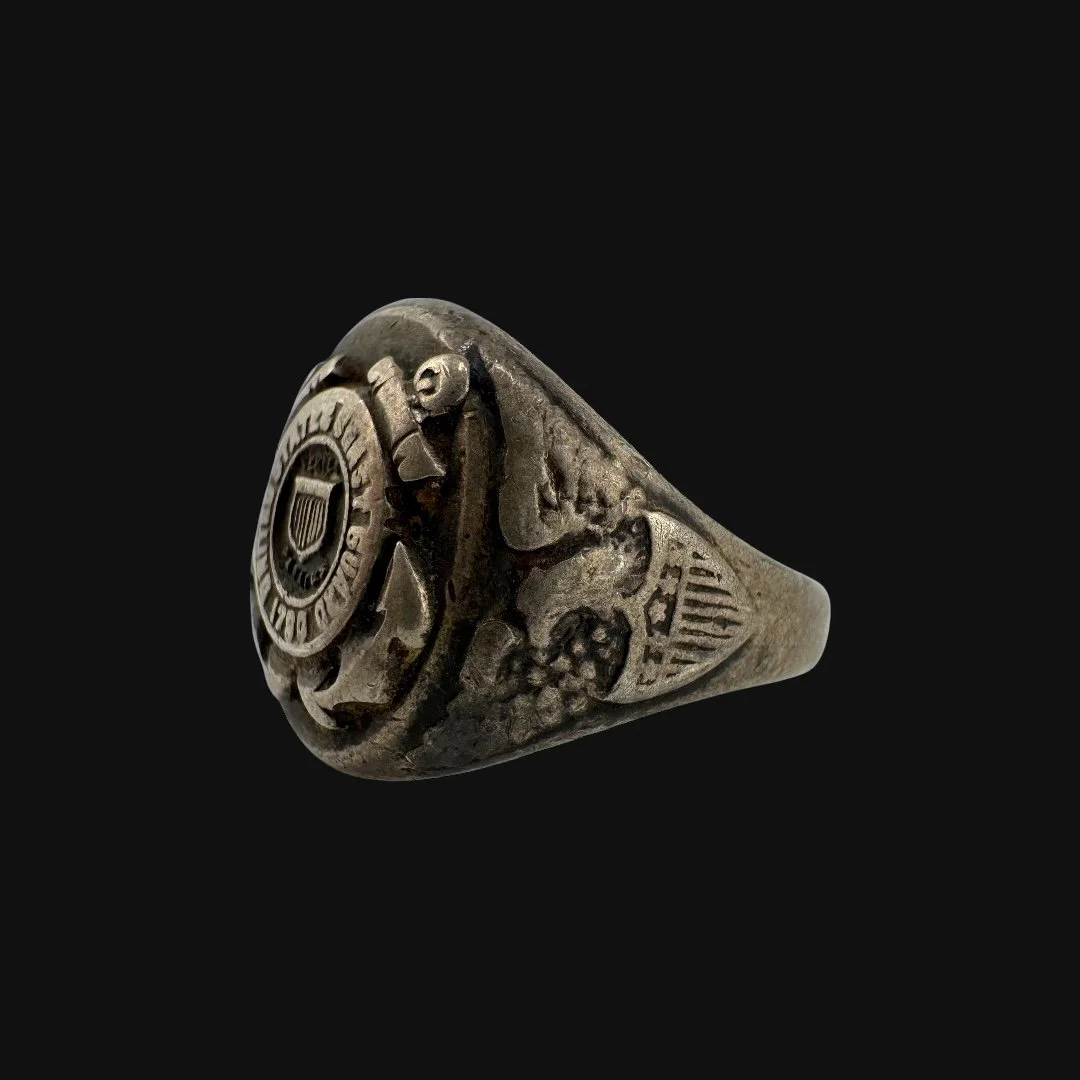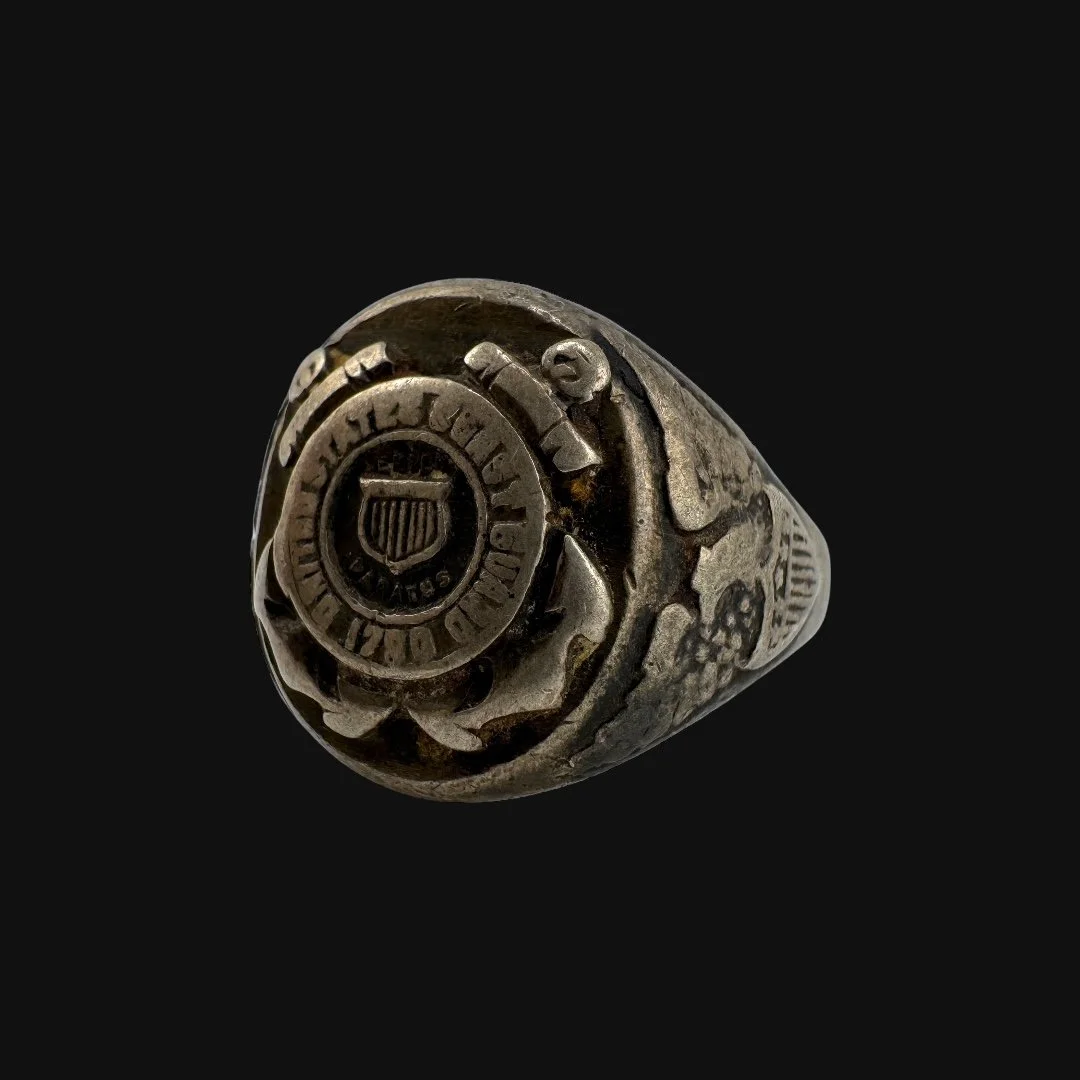 Image 1 of 15
Image 1 of 15

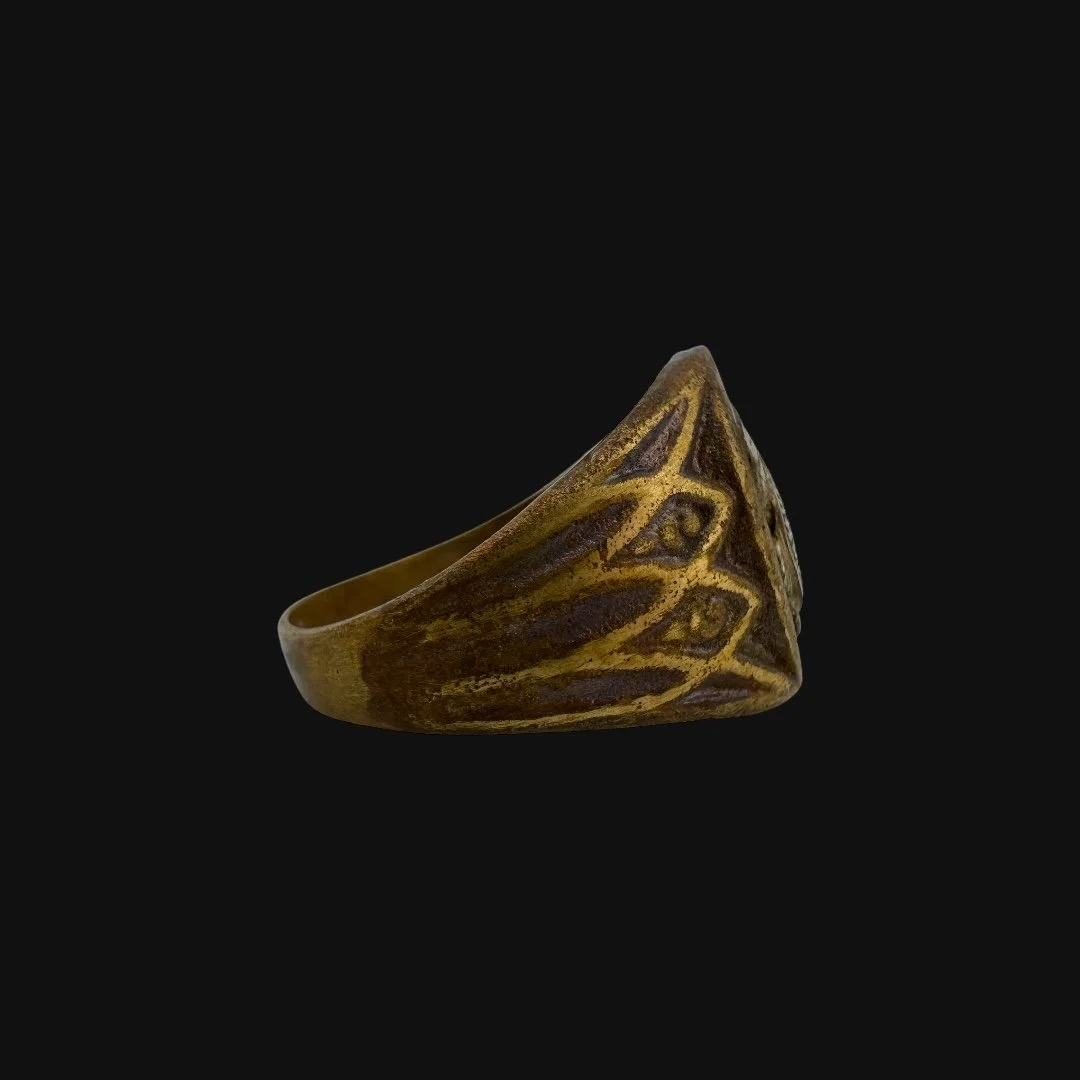 Image 2 of 15
Image 2 of 15

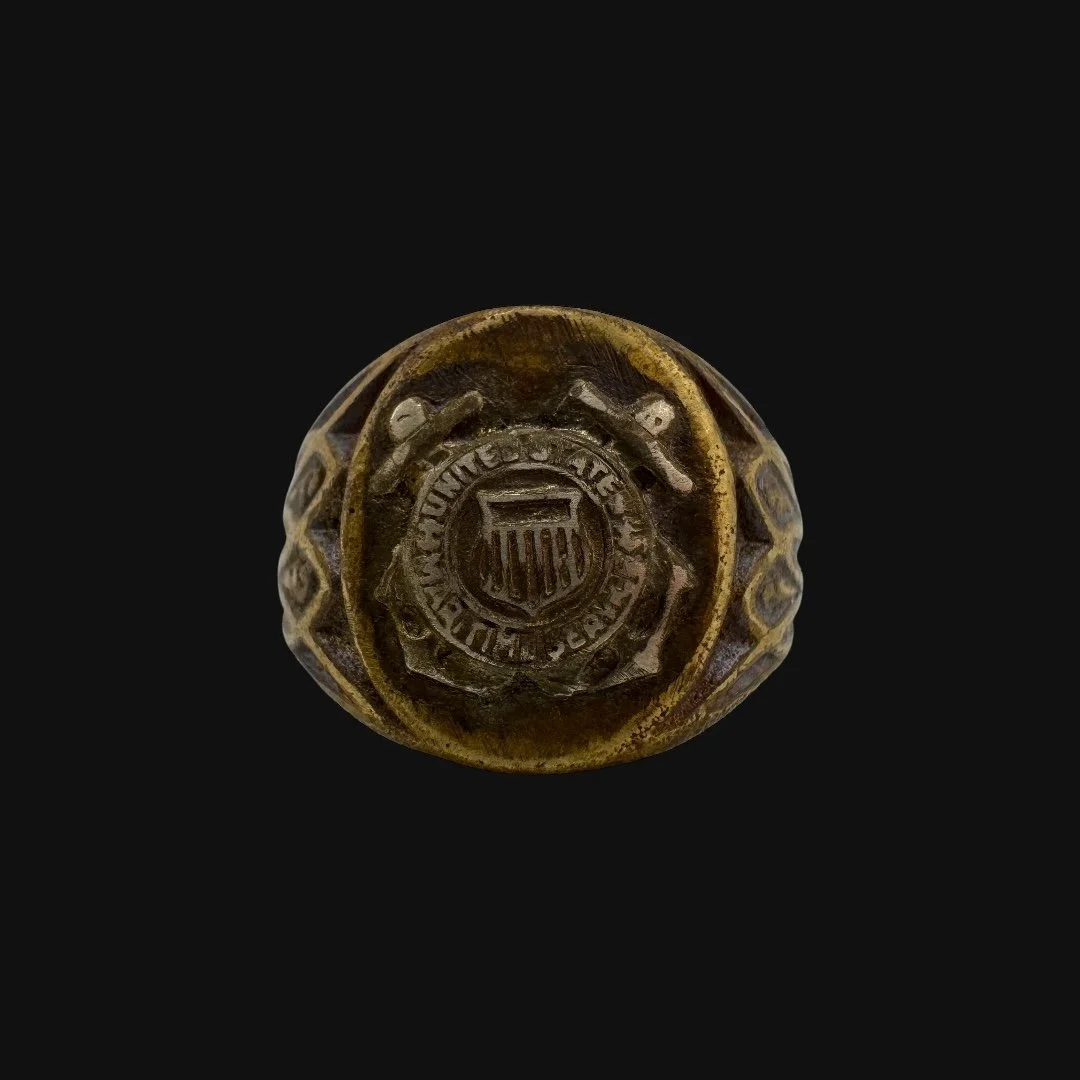 Image 3 of 15
Image 3 of 15

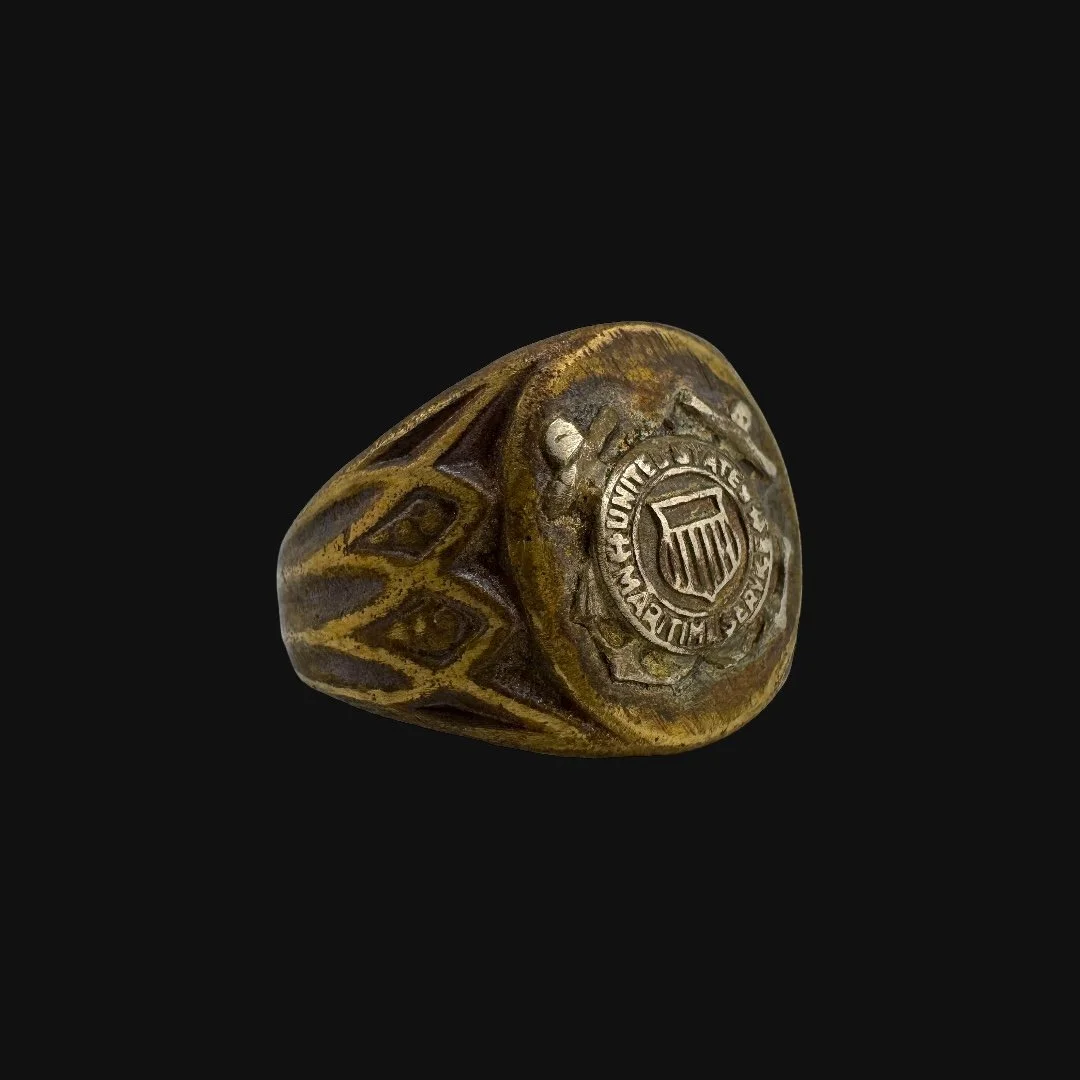 Image 4 of 15
Image 4 of 15

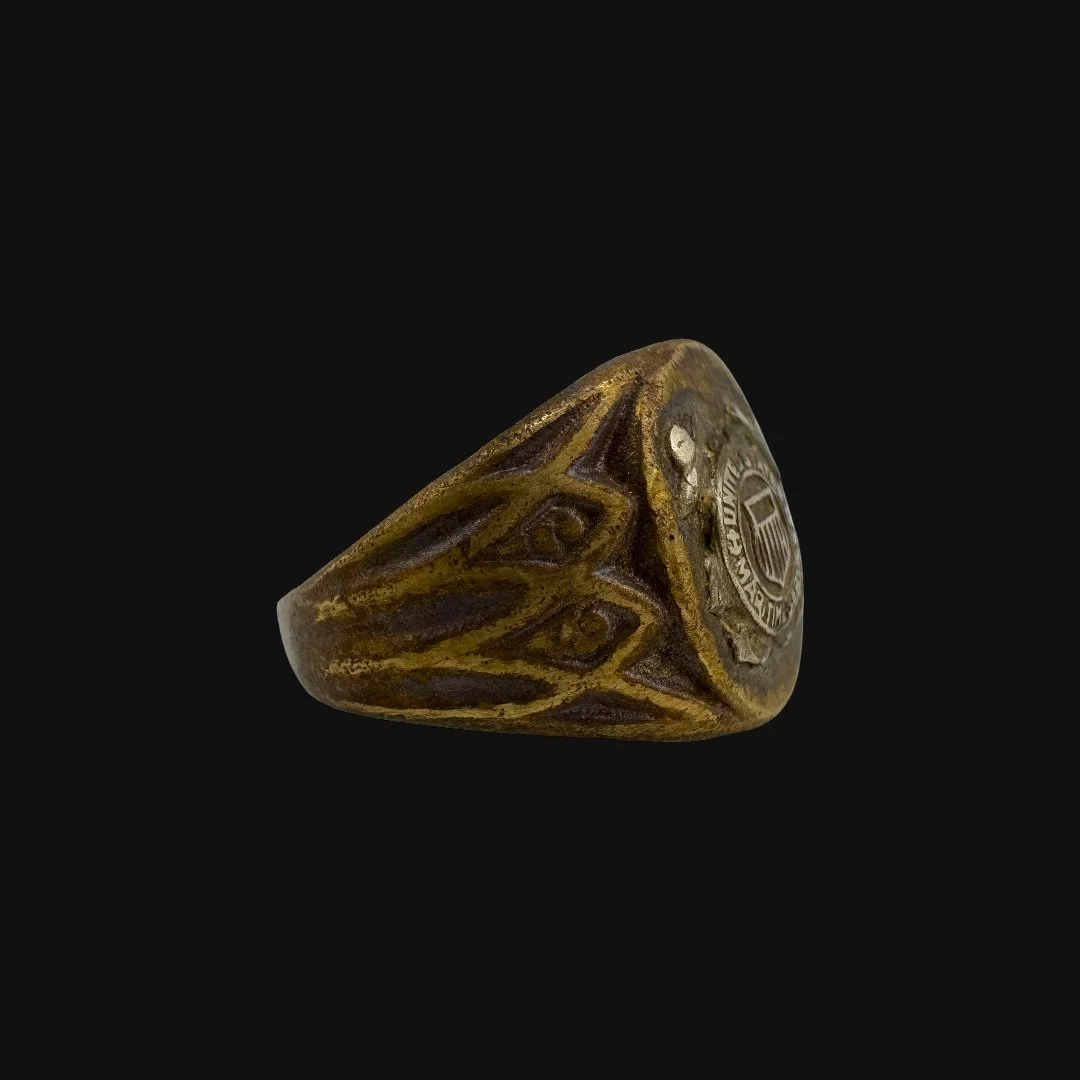 Image 5 of 15
Image 5 of 15

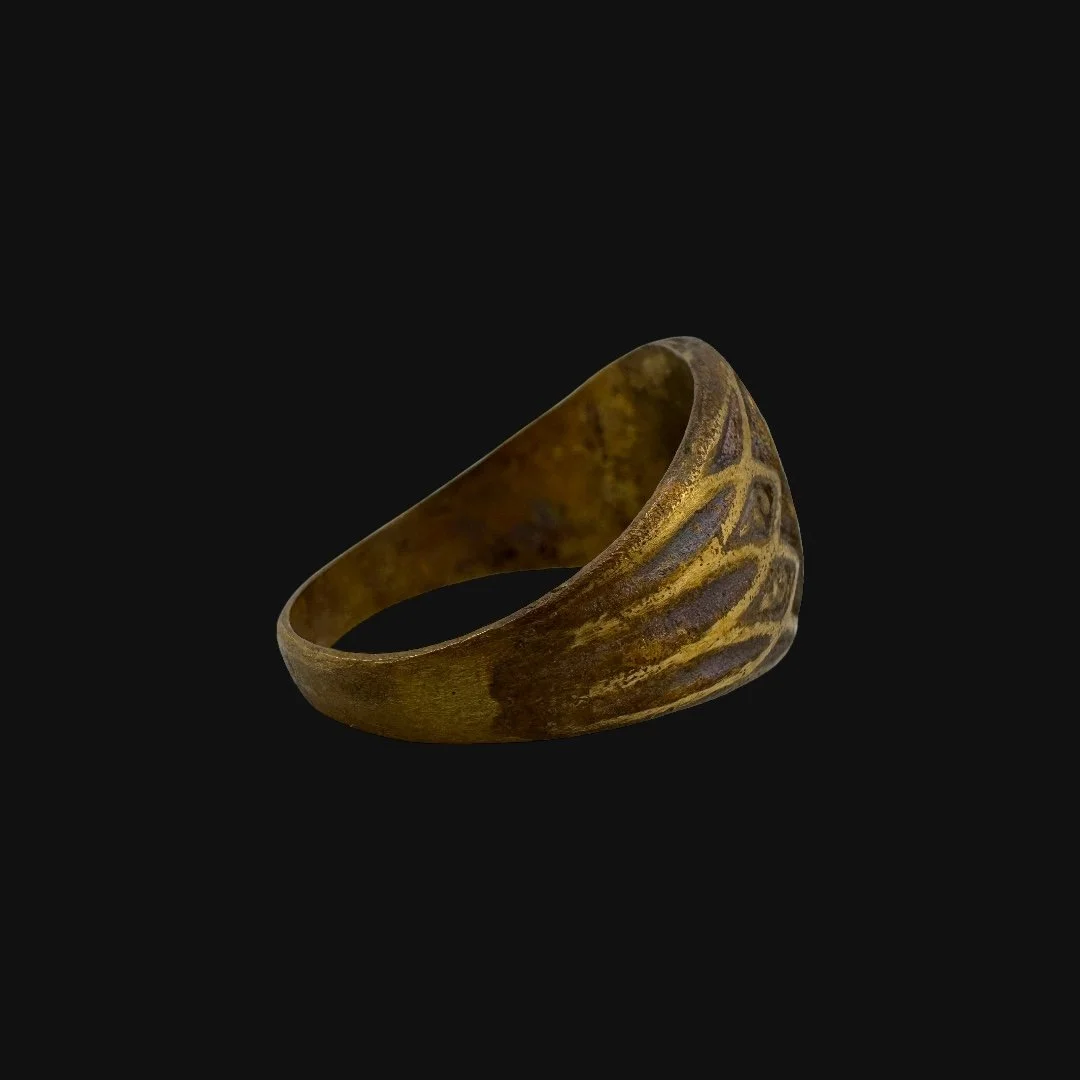 Image 6 of 15
Image 6 of 15

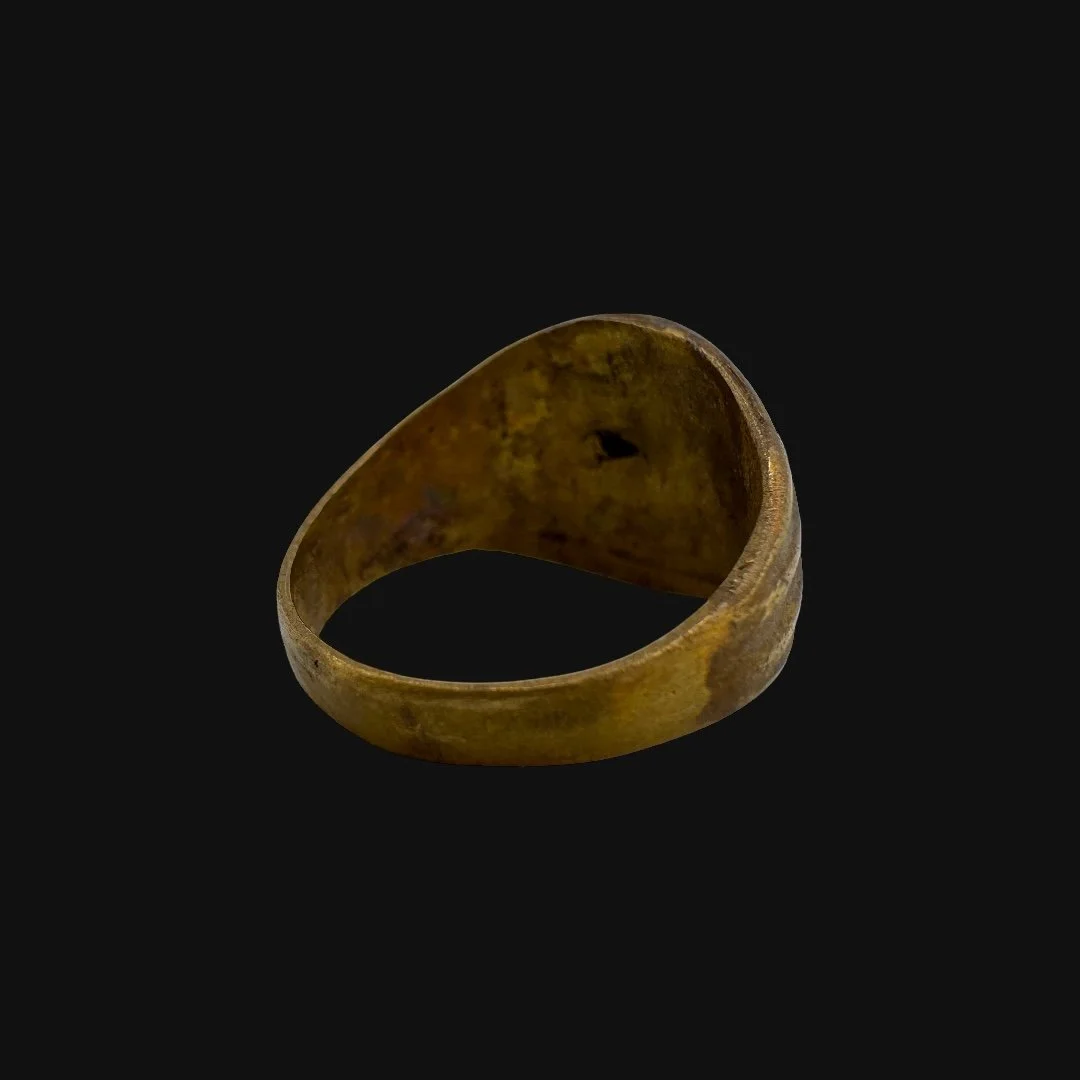 Image 7 of 15
Image 7 of 15

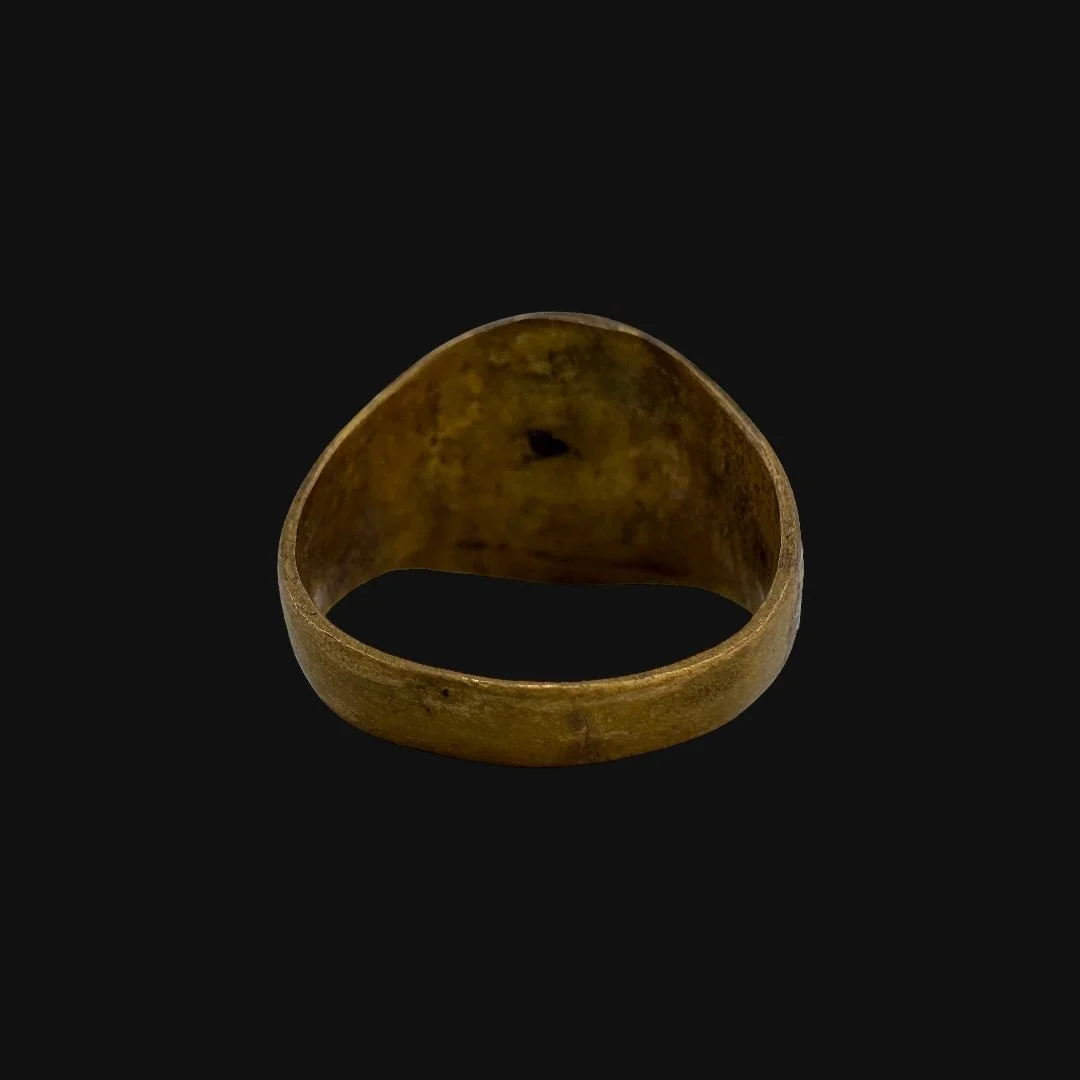 Image 8 of 15
Image 8 of 15

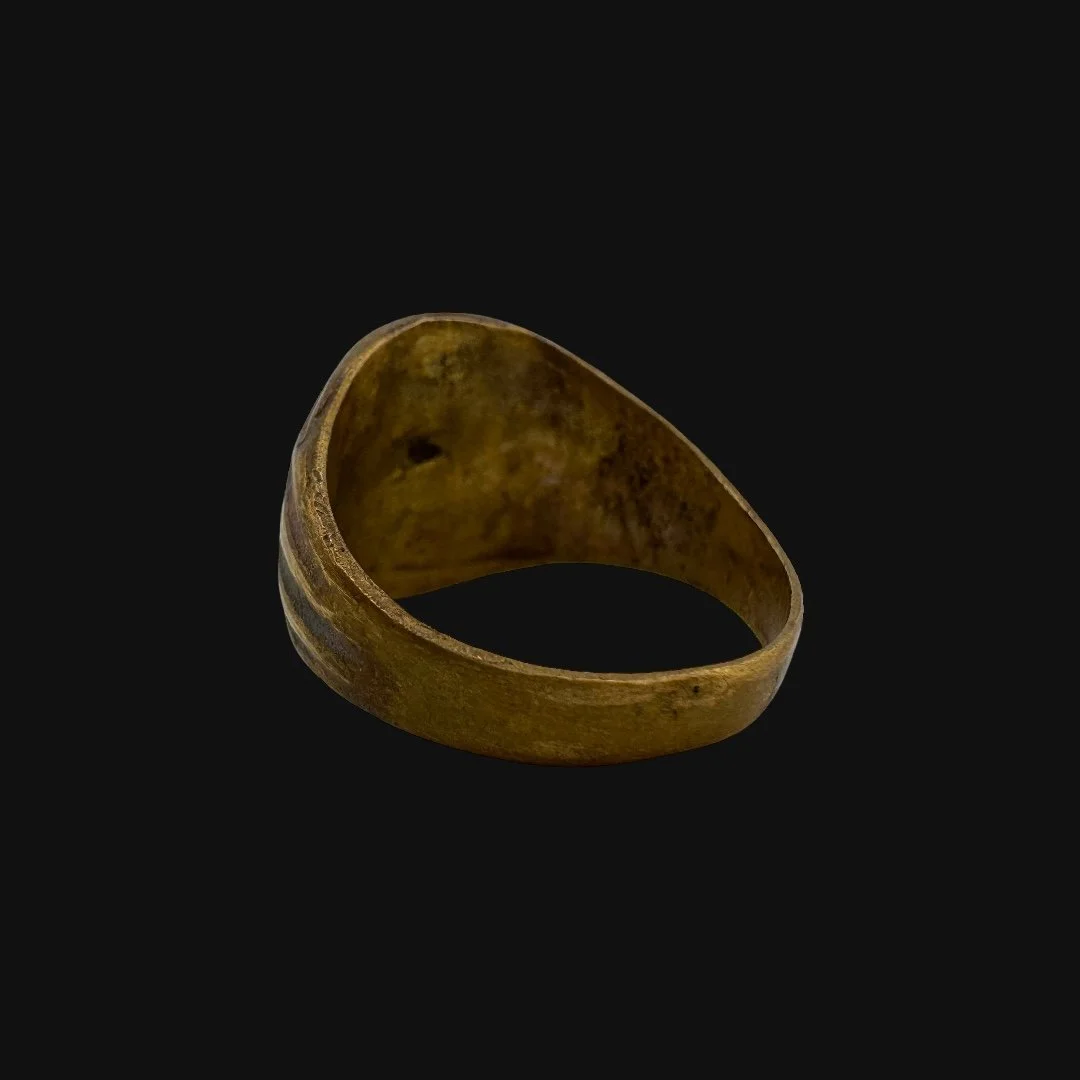 Image 9 of 15
Image 9 of 15

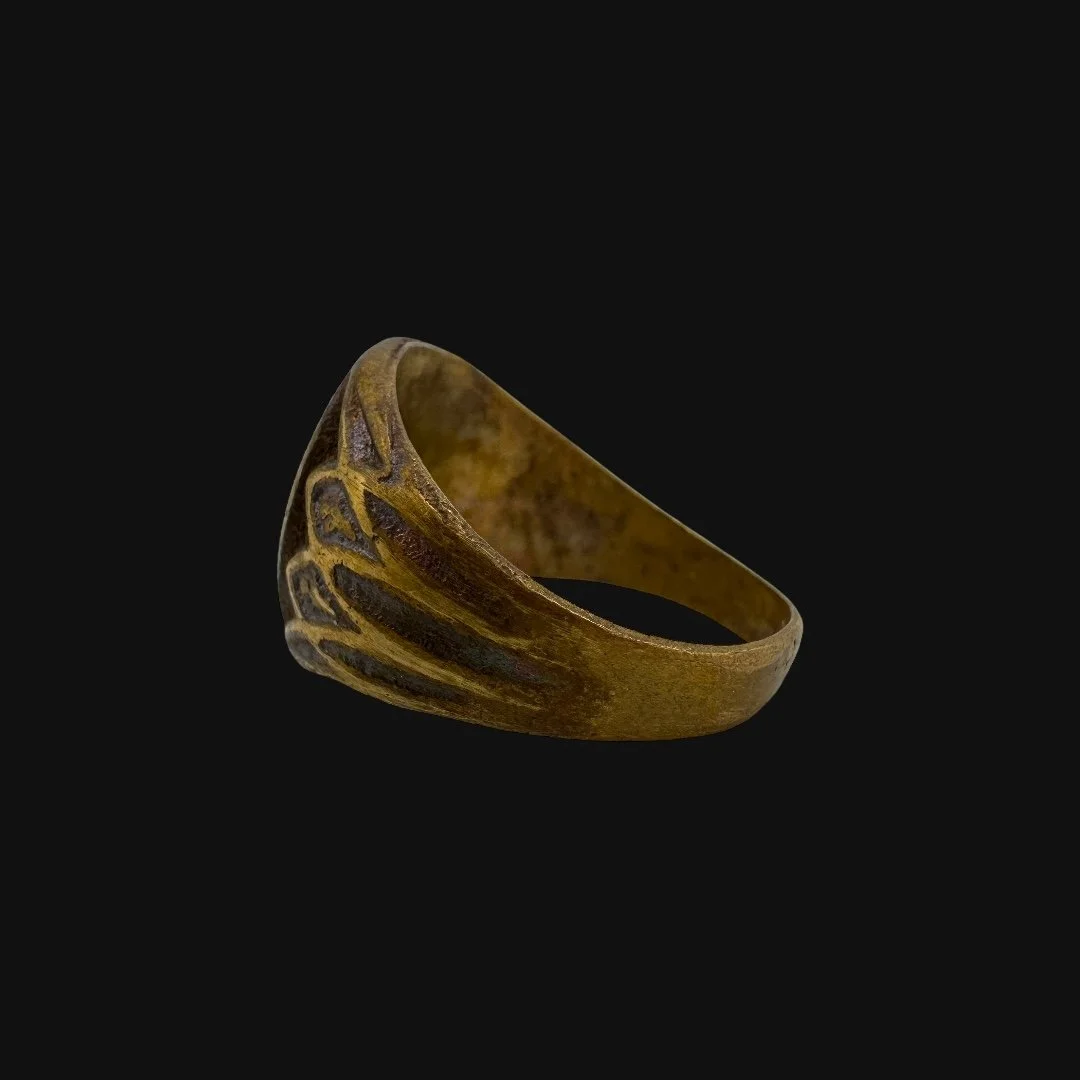 Image 10 of 15
Image 10 of 15

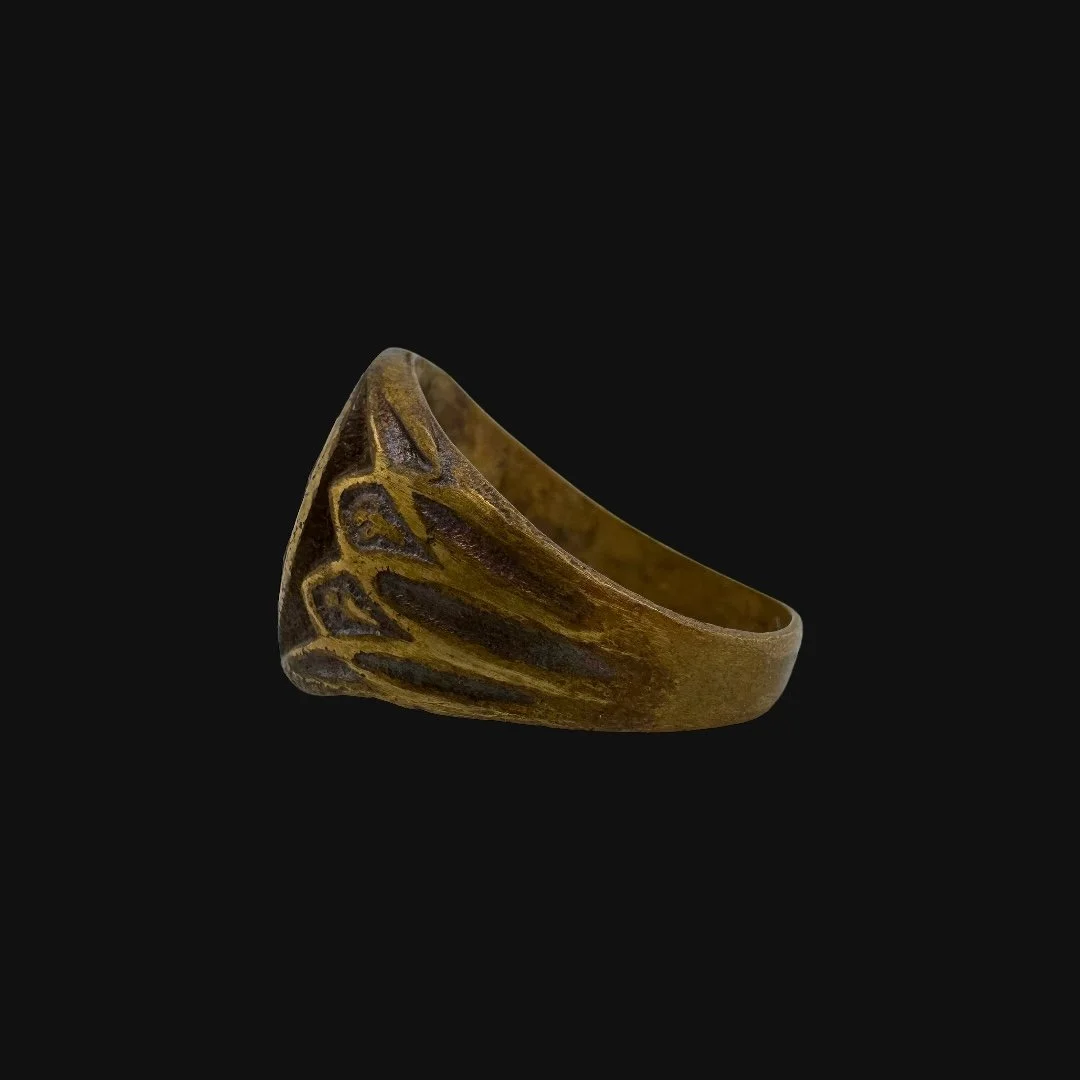 Image 11 of 15
Image 11 of 15

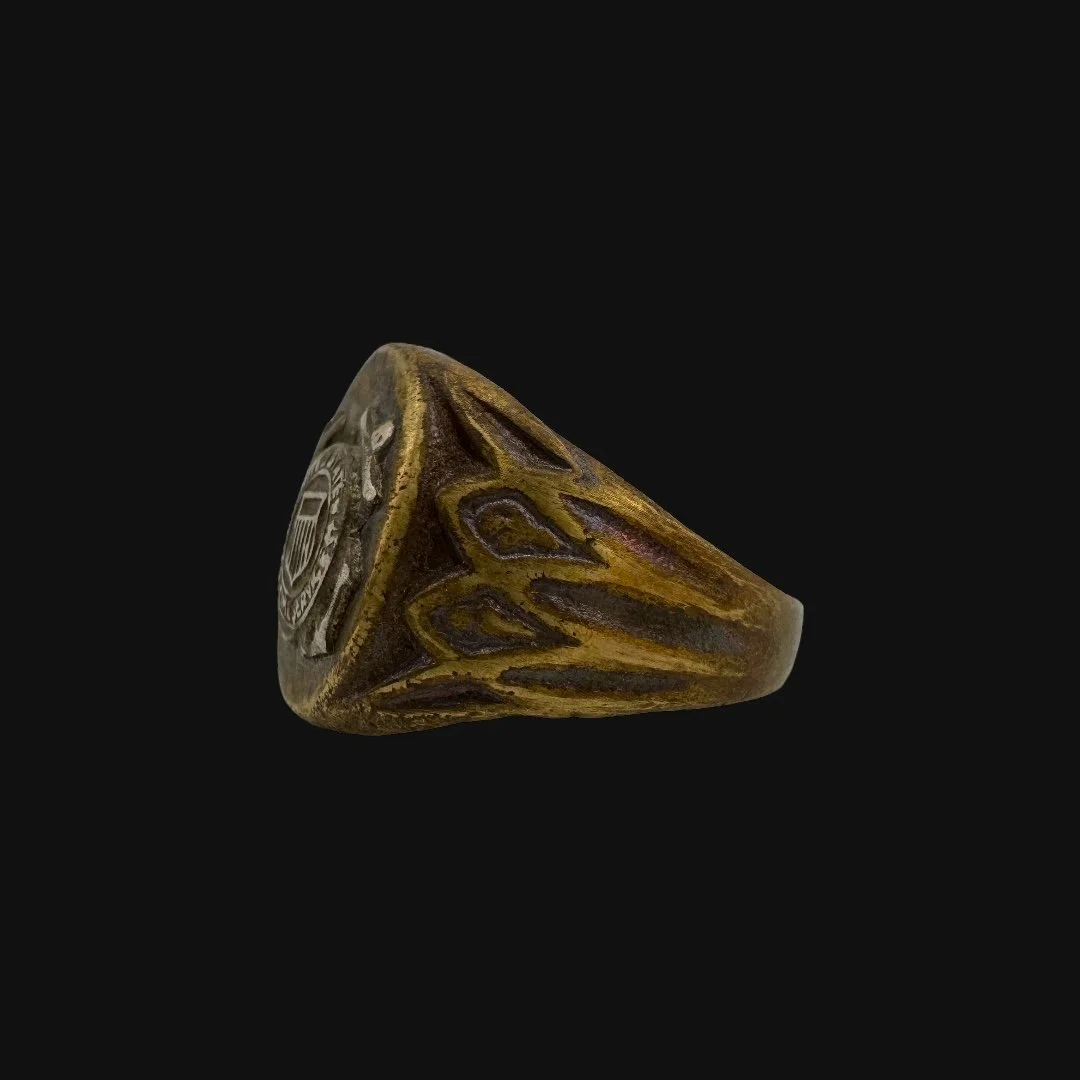 Image 12 of 15
Image 12 of 15

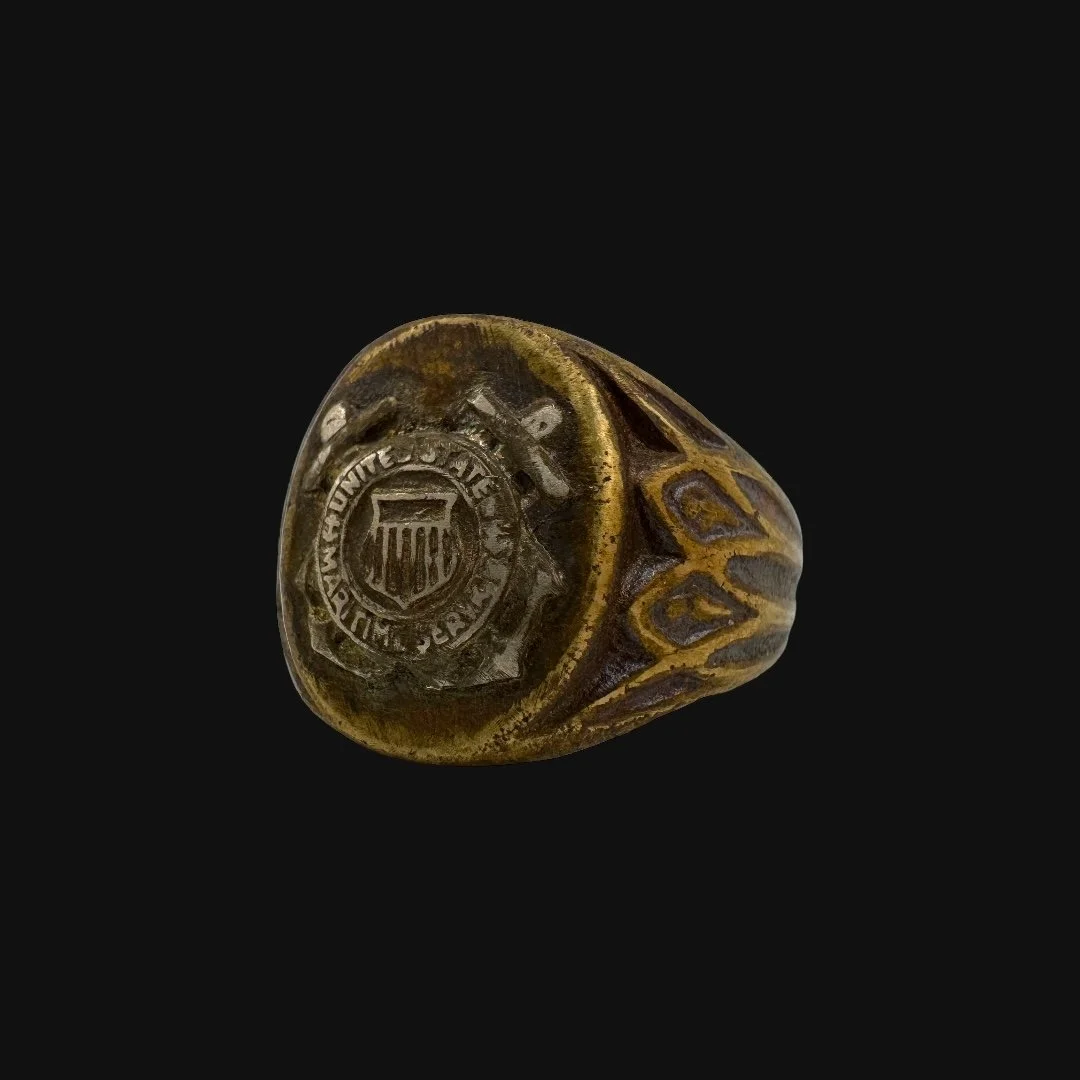 Image 13 of 15
Image 13 of 15

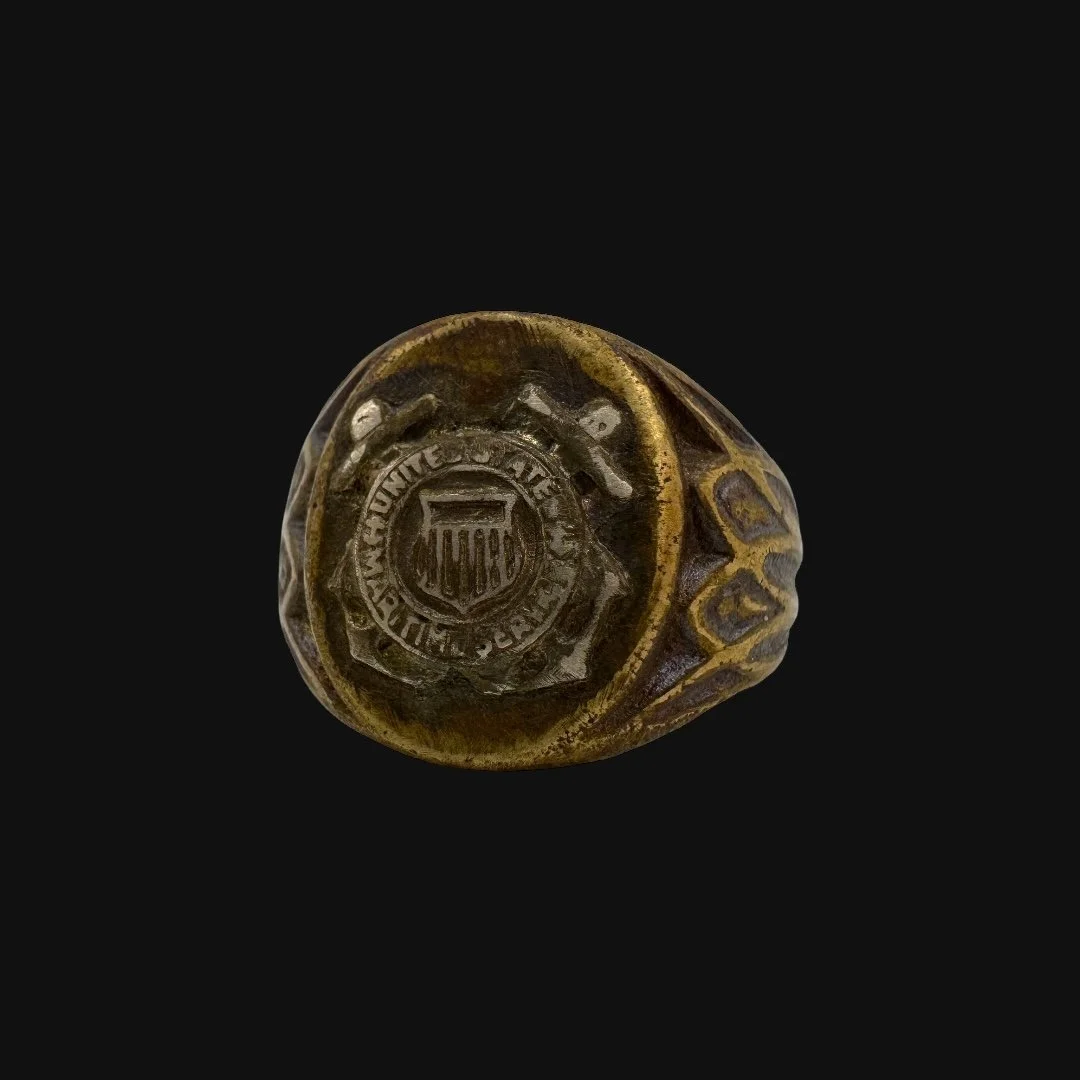 Image 14 of 15
Image 14 of 15

 Image 15 of 15
Image 15 of 15
















Original WWII 1943-1945 U.S. Coast Guard “Semper Paratu” Soldier's Military Ring (Size 11.5)
U.S. Coast Guard
Comes with a hand-signed C.O.A. and a full historical research write-up
From: World War II
Branch: U.S. Coast Guard
Dated: 1943-1945
Ring Size: 11.5 (US)
Material: Bronze & Sterling Silver
Wearable History Collection:
This authentic 1943-1945 WWII-era ring, preserved in its original and unaltered condition, combines exceptional craftsmanship with lasting durability, making it fully suitable for modern wear today. As part of our exclusive World War II “Wearable History Ring Collection,” it offers the rare opportunity to own and wear a genuine piece of World War II. Both a timeless accessory and a tangible link to the past, this truly one-of-a-kind ring stands as a wearable tribute to the courage and sacrifice of a generation.
Historical Significance to the U.S. Coast Guard During WWII:
The U.S. Coast Guard, though the smallest of the armed services, played a critical role in World War II, adapting its peacetime skills of seamanship, rescue, and coastal defense to meet the demands of global conflict. Transferred to Navy control in 1941, the service expanded from under 12,000 personnel to more than 170,000 by 1945. In the Atlantic, Coast Guard cutters escorted convoys, hunted U-boats, and rescued survivors of torpedoed ships in the icy seas of the North Atlantic. The Greenland Patrol secured vital weather stations that provided forecasts for operations like D-Day, while Coast Guardsmen at home ensured port security, supervised the loading of explosives, and patrolled the nation’s coasts against sabotage and enemy submarines.
The Coast Guard’s greatest contributions came in amphibious operations, where its expertise with small craft made it indispensable. At Normandy, Coast Guardsmen piloted landing craft through heavy fire, ferried soldiers to Omaha and Utah Beaches, and pulled the wounded from the surf. In the Pacific, they repeated these feats at Guadalcanal, Tarawa, Saipan, Iwo Jima, and Okinawa, manning landing ships, attack transports, and command vessels that brought Marines and soldiers ashore under brutal conditions. Coast Guard crews also endured kamikaze attacks, artillery fire, and mines, yet continued delivering reinforcements and supplies that kept assaults moving forward.
Heroism defined their service. From rescuing survivors of the USS Dorchester sinking in 1943, to braving fire at Salerno, Anzio, and Okinawa, Coast Guardsmen constantly risked—and often gave—their lives. More than 570 were killed in action, a heavy toll for such a small branch. Their legacy extended beyond combat: Coast Guard weather ships guided Allied fleets, icebreakers secured the Arctic against German ambitions, and the SPARs, the Coast Guard Women’s Reserve, freed men for sea duty by taking on vital communications and administrative roles at home.
By war’s end, the Coast Guard had proven itself indispensable. Its cutters and small craft kept sea lanes open, its landing craft made amphibious victories possible, and its rescue operations saved thousands. Though often overshadowed by larger branches, the Coast Guard’s adaptability, sacrifice, and quiet heroism made it a cornerstone of Allied victory, living up to its motto: “Semper Paratus” — Always Ready.
The Legacy Within This Ring:
This original World War II U.S. Coast Guard ring is a rare and deeply personal artifact, privately commissioned and worn by a sailor who served in one of the most dangerous and often overlooked branches of the war. Bearing the WWII U.S. Coast Guard emblem on its front, the ring allowed its owner to carry the proud symbol of his service not only on his uniform but also as a constant reminder on his hand. For the Coast Guardsmen who braved U-boat–infested waters in the Atlantic, piloted landing craft onto fire-swept beaches in Normandy and the Pacific, and pulled survivors from burning, sinking ships, such rings became more than jewelry. They were reminders of duty, sacrifice, and the brotherhood of sailors who stood together on the edge of war’s chaos.
Every engraved detail speaks to the pride these men carried in their calling—guardians of supply lines, masters of rescue, and pilots of the landing craft that delivered soldiers into the crucible of battle. The Coast Guard’s contributions were immense yet often unheralded: manning cutters in the Battle of the Atlantic, securing weather stations for D-Day, and carrying troops ashore at Tarawa, Iwo Jima, and Okinawa. Today, this ring endures as a wearable relic of that legacy. It represents not only the courage of the Coast Guardsmen who lived the motto Semper Paratus—Always Ready—but also the enduring spirit of those who faced danger without hesitation, ensuring victory at sea and the survival of countless lives.
U.S. Coast Guard
Comes with a hand-signed C.O.A. and a full historical research write-up
From: World War II
Branch: U.S. Coast Guard
Dated: 1943-1945
Ring Size: 11.5 (US)
Material: Bronze & Sterling Silver
Wearable History Collection:
This authentic 1943-1945 WWII-era ring, preserved in its original and unaltered condition, combines exceptional craftsmanship with lasting durability, making it fully suitable for modern wear today. As part of our exclusive World War II “Wearable History Ring Collection,” it offers the rare opportunity to own and wear a genuine piece of World War II. Both a timeless accessory and a tangible link to the past, this truly one-of-a-kind ring stands as a wearable tribute to the courage and sacrifice of a generation.
Historical Significance to the U.S. Coast Guard During WWII:
The U.S. Coast Guard, though the smallest of the armed services, played a critical role in World War II, adapting its peacetime skills of seamanship, rescue, and coastal defense to meet the demands of global conflict. Transferred to Navy control in 1941, the service expanded from under 12,000 personnel to more than 170,000 by 1945. In the Atlantic, Coast Guard cutters escorted convoys, hunted U-boats, and rescued survivors of torpedoed ships in the icy seas of the North Atlantic. The Greenland Patrol secured vital weather stations that provided forecasts for operations like D-Day, while Coast Guardsmen at home ensured port security, supervised the loading of explosives, and patrolled the nation’s coasts against sabotage and enemy submarines.
The Coast Guard’s greatest contributions came in amphibious operations, where its expertise with small craft made it indispensable. At Normandy, Coast Guardsmen piloted landing craft through heavy fire, ferried soldiers to Omaha and Utah Beaches, and pulled the wounded from the surf. In the Pacific, they repeated these feats at Guadalcanal, Tarawa, Saipan, Iwo Jima, and Okinawa, manning landing ships, attack transports, and command vessels that brought Marines and soldiers ashore under brutal conditions. Coast Guard crews also endured kamikaze attacks, artillery fire, and mines, yet continued delivering reinforcements and supplies that kept assaults moving forward.
Heroism defined their service. From rescuing survivors of the USS Dorchester sinking in 1943, to braving fire at Salerno, Anzio, and Okinawa, Coast Guardsmen constantly risked—and often gave—their lives. More than 570 were killed in action, a heavy toll for such a small branch. Their legacy extended beyond combat: Coast Guard weather ships guided Allied fleets, icebreakers secured the Arctic against German ambitions, and the SPARs, the Coast Guard Women’s Reserve, freed men for sea duty by taking on vital communications and administrative roles at home.
By war’s end, the Coast Guard had proven itself indispensable. Its cutters and small craft kept sea lanes open, its landing craft made amphibious victories possible, and its rescue operations saved thousands. Though often overshadowed by larger branches, the Coast Guard’s adaptability, sacrifice, and quiet heroism made it a cornerstone of Allied victory, living up to its motto: “Semper Paratus” — Always Ready.
The Legacy Within This Ring:
This original World War II U.S. Coast Guard ring is a rare and deeply personal artifact, privately commissioned and worn by a sailor who served in one of the most dangerous and often overlooked branches of the war. Bearing the WWII U.S. Coast Guard emblem on its front, the ring allowed its owner to carry the proud symbol of his service not only on his uniform but also as a constant reminder on his hand. For the Coast Guardsmen who braved U-boat–infested waters in the Atlantic, piloted landing craft onto fire-swept beaches in Normandy and the Pacific, and pulled survivors from burning, sinking ships, such rings became more than jewelry. They were reminders of duty, sacrifice, and the brotherhood of sailors who stood together on the edge of war’s chaos.
Every engraved detail speaks to the pride these men carried in their calling—guardians of supply lines, masters of rescue, and pilots of the landing craft that delivered soldiers into the crucible of battle. The Coast Guard’s contributions were immense yet often unheralded: manning cutters in the Battle of the Atlantic, securing weather stations for D-Day, and carrying troops ashore at Tarawa, Iwo Jima, and Okinawa. Today, this ring endures as a wearable relic of that legacy. It represents not only the courage of the Coast Guardsmen who lived the motto Semper Paratus—Always Ready—but also the enduring spirit of those who faced danger without hesitation, ensuring victory at sea and the survival of countless lives.
